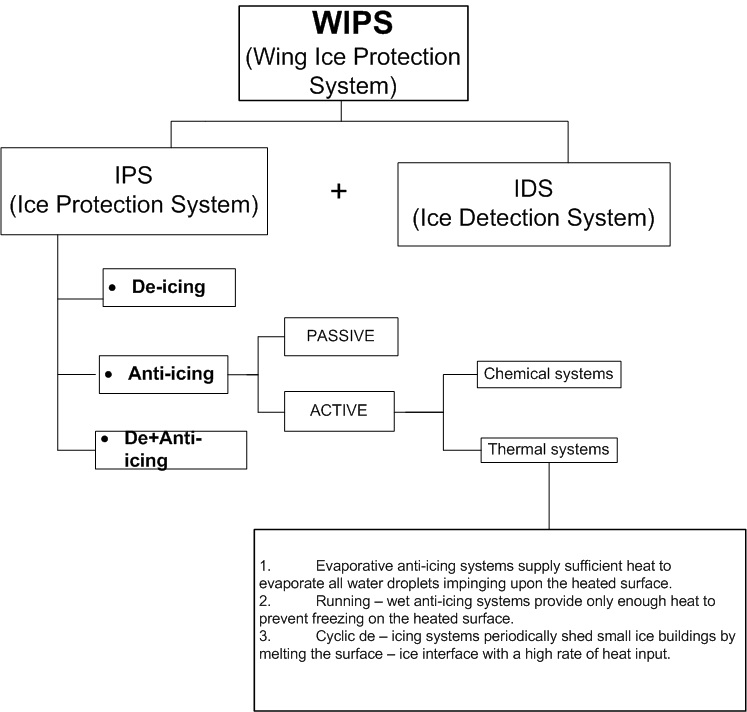Wing Ice Protection System and Cleansky.
The main focus of demonstration in Clean Sky (CS) will be the validation and maturation of the aircraft technologies and sub-architectures, related to the concept of 'All Electric Aircraft' (AEA). Among others, CS intends to demonstrate and validate technologies as:
• Large-scale architectural integration of electrical generation, distribution and loads, and of thermal management
• Flight electrical equipment systems, including environmental conditioning and protection
Several promising technologies are being explored and developed by CS, ranging from power generation, distribution, and conversion systems, resulting in an architecture that became more and more complex and have to be optimized to substantially reduce the consumption of non-propulsive power. One of such technologies likely to be optimized is the electrical Wing Ice Protection System (WIPS), which protect against the build-up of ice on structures of the aircraft. During flight, the surfaces of an aircraft can be exposed to water vapour at low temperatures and, if no preventative action is taken, ice can quickly form on the wings, on control surfaces, and on other parts of the aircraft in such a way as to alter the aerodynamic performances with potentially catastrophic consequences.
As opposed to ground icing, which can be visually checked and taken care of on the runway, in-flight icing requires rigorous procedures and systems to address flight safety regulations. The differents systems are included in FIg.1.

Depending on the aircraft category and engine type, changing existing aircraft ice protection solutions has either an energy saving objective (large aircraft) or de-icing performance increase (regional turboprop aircraft):
- Electro-thermal ice protection solution for large aircraft using heating elements integrated in the slat leading edge structure.
- Electromechanical ice protection technology using solenoid actuators integrated in the slat leading edge (only for de-icing).
- Hybrid ice protection system for any platform (large aircrafts, business jets and regional turboprop aircraft). The hybrid system comprises a combination of electro-thermal mats and electromechanical actuation mats integrated in the leading edge.

Fig 2.: Aircraft category Vs WIPS type
The electro-thermal WIPS is relatively new approach to wing ice protection that avoids the use of bleed air from the engines, which adversely impacts aircraft fuel efficiency. Actually, electro thermal ice protection systems typically comprise a number of electrically - powered heater elements such as heater mats applicable to both metallic and composite structures, which can be used as anti-icing zones in which a sufficient temperature is maintained at the surface of the wing in order to prevent the formation of ice.
The heaters may be constructed from wire conductors woven into an external mat, conductive composite material or a sprayed metallic coating applied directly to the protected surface. Metallic conductive cables are zoned by use of multiple elements and multiple electrical terminations. Conductive composites could be for instance a conductive textile consisting of metal coated carbon fibers, with the desired material weight, thickness, and electrical resistivity, or conductive foils that are bounded to form heater laminates. Metal sprayed heater consists basically of a pattern of sprayed on metal heating elements embedded between two layers of insulating material. They can be applied directly on the surface to be heated, or produced in a prefabricated form and secondarily bonded to the component, and are designed for a wide range of power loadings (from 0.15 to 50.0 kWt/m2).
The electro thermal WIPS works by embedding the electro-thermal heater mats into the surface to be protected, for instance, the interior surface of the composite slat leading edge skin. An electronic controller monitors the condition of each surface individually, and controls the power electronics that supplies the power to the heater element, which could be AC or DC, depending upon the particular customer installation requirement.
The complete system comprises also the controlling software with smart power management to minimize overall power requirement and maximize performance, intelligent power controllers that can be centralized or remotely located, electrical harnesses and connection cables. Protection systems in that style have been already developed, checked and validated
Share: